My SHPO colleagues and I, just like the rest of the world, are continuing to emerge from our COVID cocoons. We’ve been getting out and about more each month but still find ourselves wanting to be physically connecting with places in every way we can.
We recently had a chance to do just that. Every other month, PA SHPO staff gather for a team meeting that promises connecting and collaborating in person. These meetings typically include the standard office updates and reporting out about projects and initiatives as well as a group activity and an educational session.
For the September meeting, the SHPO Diversity, Equity, Inclusion & Access (DEIA) Working Group volunteered to organize the meeting. We set out a few guidelines for this event at the start of our planning:
- Explore! We wanted to get out of Harrisburg and visit another part of the commonwealth.
- Learn! We wanted to learn more about some aspect of underrepresented or not-well-known history in Pennsylvania.
- Support! We wanted to support minority organizations, histories, and business owners as much as possible.
Fast forward a few months to September… The travelling team meeting evolved to be a two-day Lackawanna County extravaganza. Day 1 involved a handful of folks hard at work in Scranton and Day 2 focused on all of us together at the team event.
Day 1: Scranton
If you haven’t been, or ever watched the TV Show “The Office,” one of my colleagues summed up the city well with “Scranton is pretty neat.”
The day started with a visit to the Black Scranton Project building (more on them later), and then a quick walkabout through the area to update some PA-SHARE records. The group then split into two teams to survey and update records: one for the Bethel AME Church and Scranton’s downtown historic districts and the other for synagogues and resources related to Jewish history and culture.
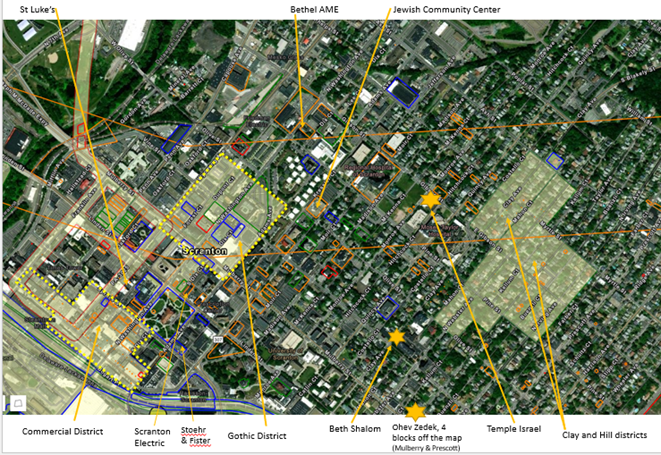
We found Scranton to be a welcome and exciting place. My colleague Megan, our Eastern Region Community Preservation Coordinator (and recent transplant from South Carolina), said, “I was surprised by the quantity and quality of the architectural design of Scranton, and I feel like we only scratched the surface in exploring the city and its story.”
Day 2: Waverly
“Does Waverly look like a movie set? Absolutely. Yet it’s a real place with a unique and valuable story to tell.”
That really says it all about Waverly… but I’ll qualify my co-worker’s sentiment by saying that Waverly looks like a beautiful New England town nestled in rural Pennsylvania. Located in the northwest corner of Lackawanna County about ten miles northwest of Scranton, Waverly was originally called Abington Center and founded around 1800 by settlers from Connecticut at a time when that part of the Keystone State was contested ground claimed by both Connecticut and Pennsylvania.
The Comm
I’ll start with our hosts: The Waverly Community House, aka The Comm.
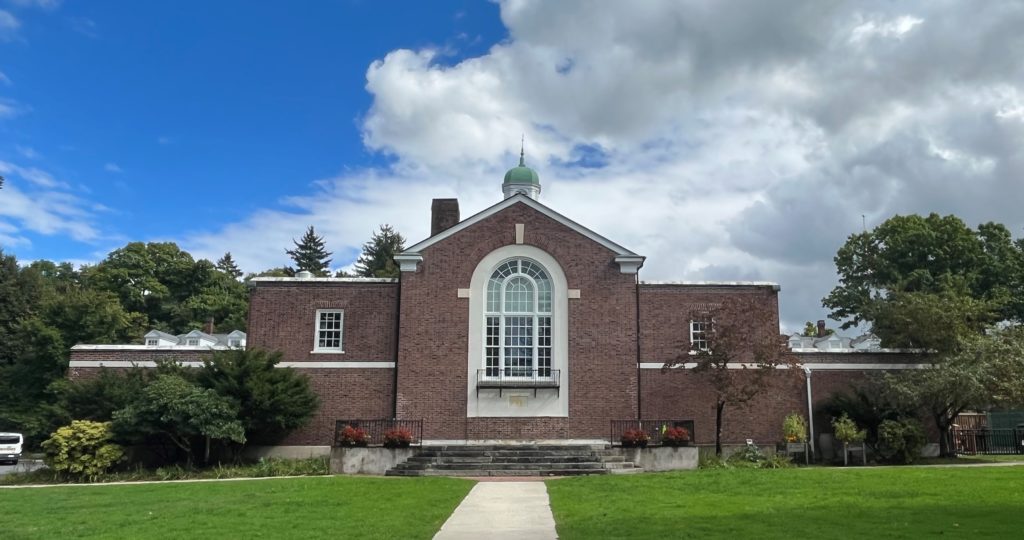
Barbara, our Above Ground Environmental Review Supervisor, said “Our meeting location, The Comm, was a wonderful surprise. The National Register-listed 1920 Colonial Revival building has fascinating architectural detailing inside and out. Initially constructed by Margaretta Belin in memory to her husband to benefit the residents of Abington Township, I love how it continues under community use for so many things including a thrift store. I only wish we had more time to explore the garden and the playground.”
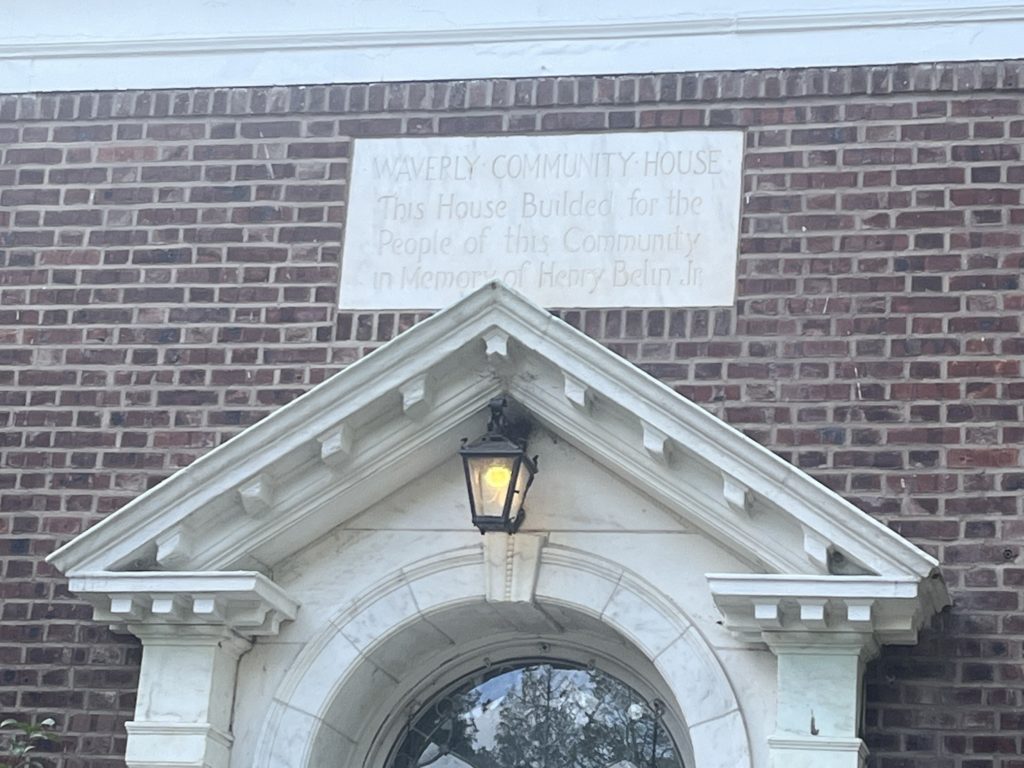
PHMC awarded The Comm a 2020 Keystone Historic Preservation Planning grant to support the Schematic Design and Design Development planning phases of a building-wide HVAC replacement system. Karen, the Keystone Grant Manager, told me that “it was nice to see the Waverly Community Center in person after hearing so much about their programming. It was great to connect with Maria Wilson, their Director.”
The staff at The Comm were accommodating and welcoming and truly made us feel at home (and a bit spoiled!). They set up the auditorium for our day-long event and allowed us to explore the building and all they offer the local and regional community. A huge thanks to them!
Black Scranton Project
After a morning group activity, we were ready to go into “listening” mode.
The Black Scranton Project is an initiative focused on uncovering, archiving, and celebrating Black history and culture in the Scranton area. Glynnis Johnson founded Black Scranton Project with the goal to “cultivate awareness and unity through arts and public history.”
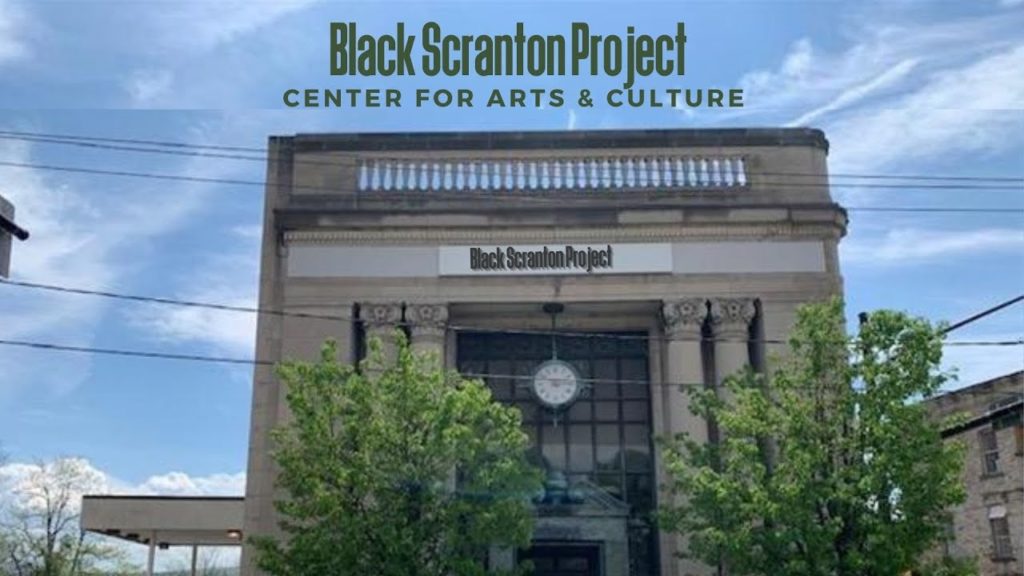
We invited Glynnis to join us at our team meeting to provide the first of our educational sessions for the day. After learning about her and the work of the organization, she treated us to some history lessons about Scranton’s African American community. Take a tour through their website to learn more about their work, vision, and achievements so far. I highly recommend taking some time to check out their YouTube videos – I think you’ll like them as much as we did.
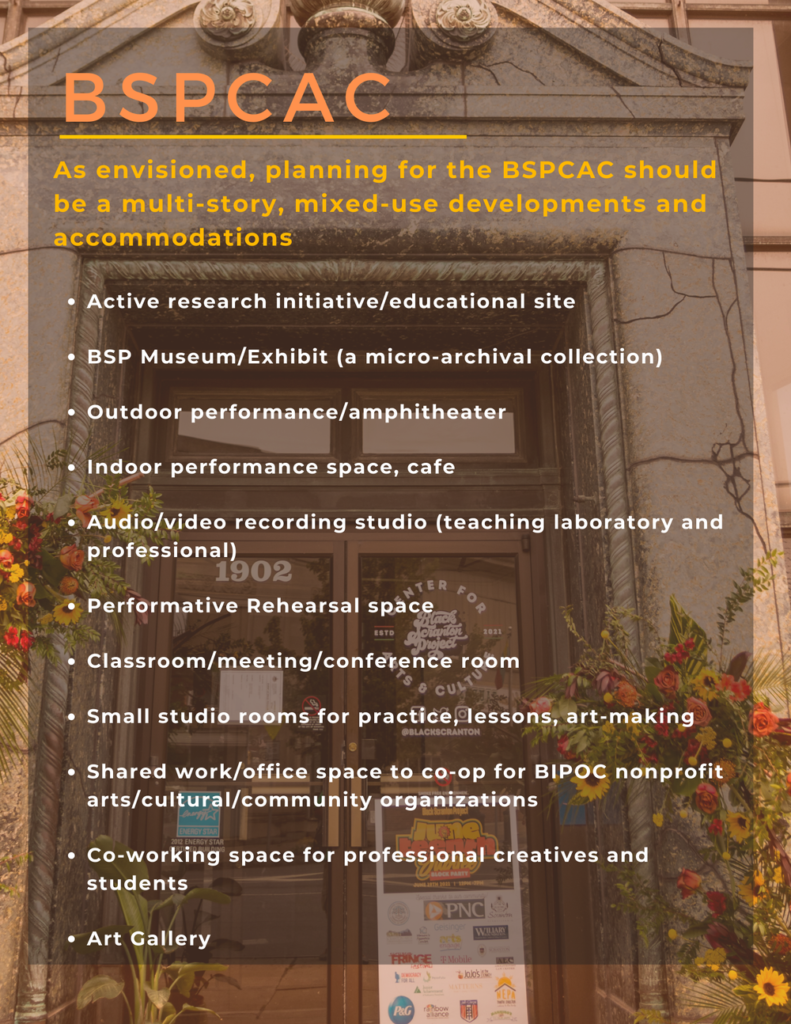
Tyra, our Transportation Special Initiatives Specialist, shared her thoughts on the presentation: “Coming from a parent with a child that is pursing music as a career, I was most impressed by the Black Scranton Projects initiatives, especially their connection to music. I think this is a very interesting and usually successful way to get people involved in caring about their community, especially the youth. I love that their space includes recording studios to create music – this is an incredible advantage!”
I think we all agree wholeheartedly with our colleague John, who observed that “Black Scranton Project is doing incredible work to bring to light stories that have been ignored by too many for too long.”
Destination Freedom Walking Tour
Day 2 had started with torrential rains but thankfully they cleared out in time for the day’s last activity. A walk was also a welcome exercise after the delicious Puerto Rican food we had for lunch.
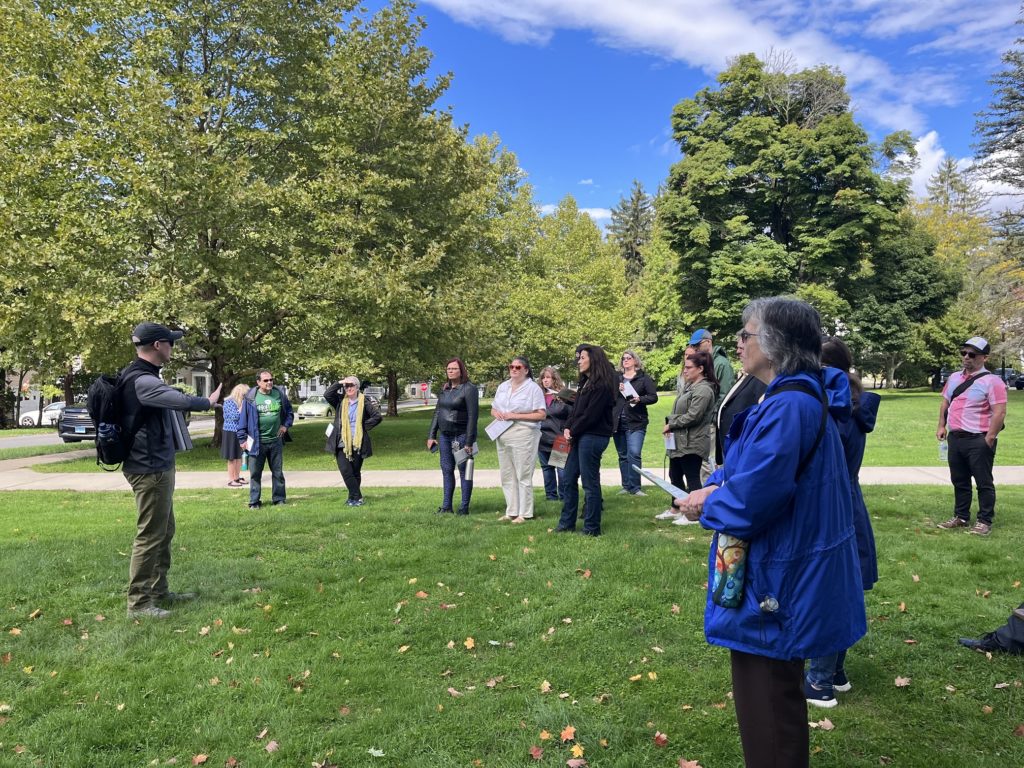
Continuing with the guidelines of explore, learn, and support, we got an in-depth history lesson on the Underground Railroad and abolition movement in northeastern Pennsylvania with the Destination Freedom Underground Railroad Walking Tour of Waverly. The program explores the lives of the area’s abolitionists and formerly enslaved settlers. Their goal is “to tell the story of Waverly by exploring the town itself and using the experiences of 19th century Waverly residents to better understand the world around us today.”
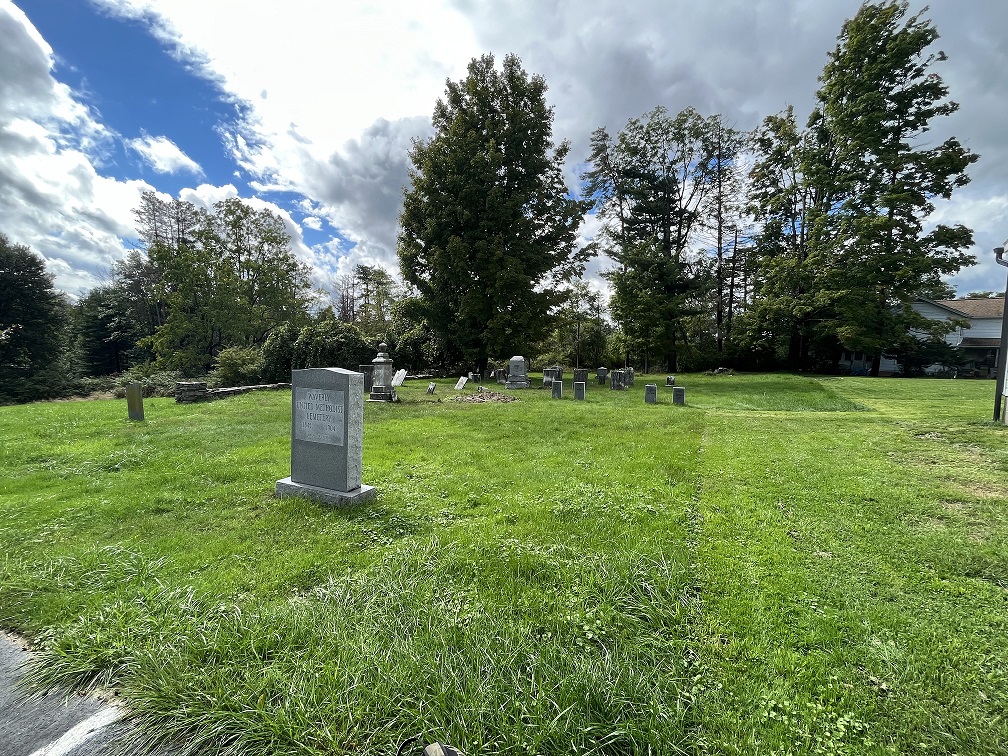
Walking tours like this one, which was led by EJ Murphy, are a fantastic way to connect story, people, and place. Taylor, our Pennsylvania Archaeological Site Survey (PASS) Coordinator, told me that “the town of Waverly is like a tiny time capsule with beautiful historic homes that convey it’s fascinating history and association with the Underground Railroad and abolitionists during 19th century.”
At stops throughout the community like the Waverly United Methodist Cemetery, we all learned something new about this aspect of Pennsylvania history, particularly in a region perhaps not widely thought to have a strong and significant role in African American history.
Day 3: Home Again
On Day 3, we were exhausted, inspired, surprised, thoughtful, and impressed with all that we had seen and learned from our Lackawanna County extravaganza. I think I can also say that we were already looking forward to next fall’s team meeting and where that might take us.
I asked Andrea, PA SHPO’s Director, what she thought of the day:
“Our hosts and guest speakers were inspirational – not only due to the work they are committed to personally, but also their commitment to educating others. I was also moved by how PA SHPO staff wanted to enrich our work (and themselves) with these stories and lessons + want to continue learning and improving our programs to be more accessible and inclusive.”
I say, ditto and good luck to my colleagues who will plan next year’s trip!
Comment Policy
PHMC welcomes and encourages topic-related comments on this blog. PHMC reserves the right to remove comments that in PHMC’s discretion do not follow participation guidelines.
Commenters and Comments shall be related to the blog post topic and respectful of others who use this site.
Commenters and Comments shall not: use language that is offensive, inflammatory or provocative (this includes, but is not limited to, using profanity, obscene, or vulgar comments); disparage other commenters or people; condone illegal activity; identify the location of known or suspected archeological sites; post personal information in comments such as addresses, phone numbers, e-mail addresses or other contact details, which may relate to you or other individuals; impersonate or falsely claim to represent a person or an organization; make any commercial endorsement or promotion of any product, service or publication.
If you would like to comment on other topics not related to this blog post but related to PHMC, please fill out the PHMC Contact Us Form.

Leave a Reply